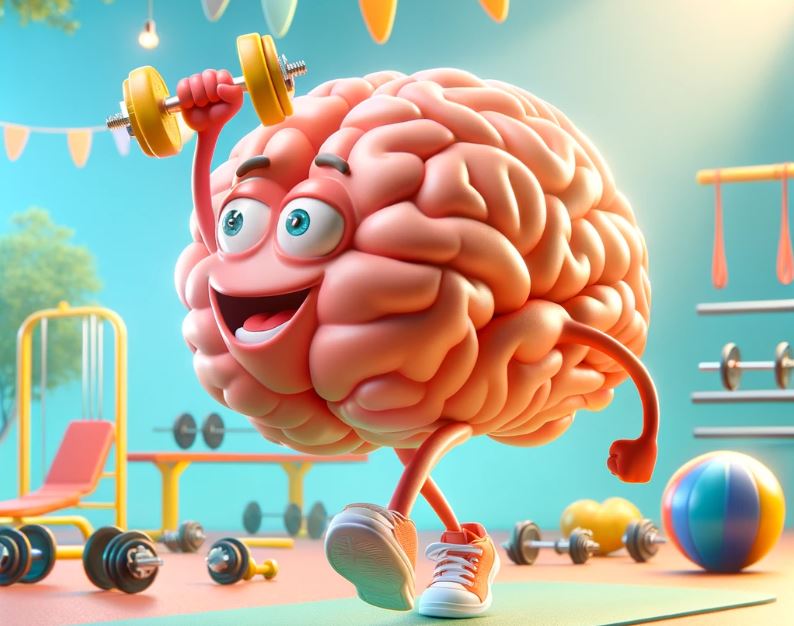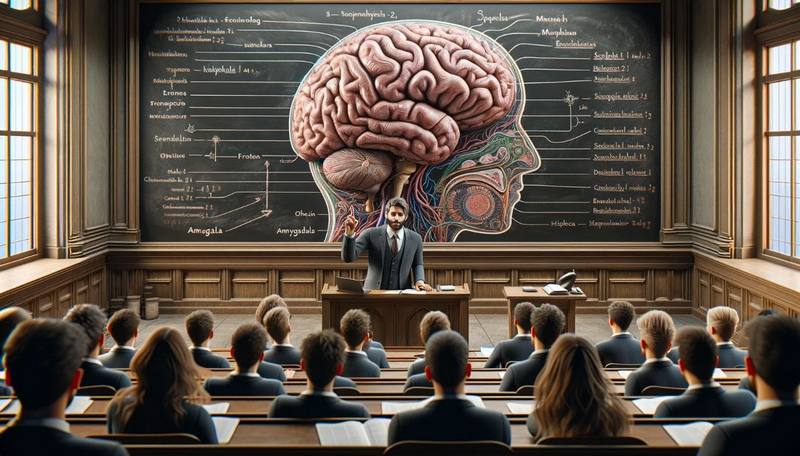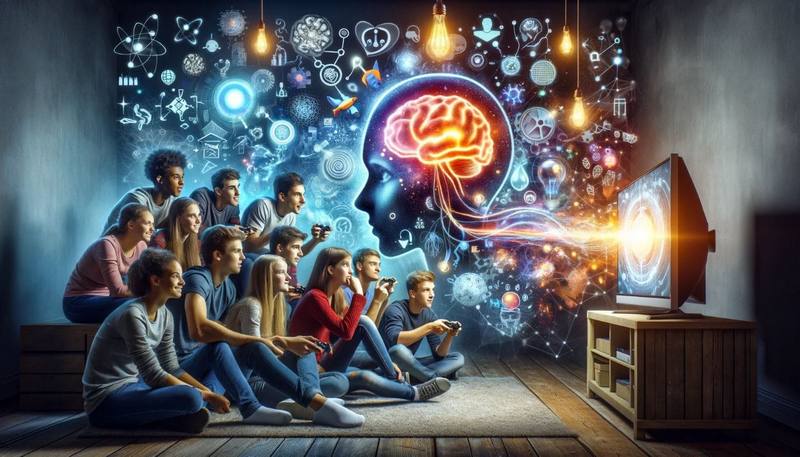Cognitive Flexibility: The Key to Mental Agility and Success


In today’s fast-paced world, the ability to adapt and think creatively is more crucial than ever before. Cognitive flexibility, or our mental capacity to switch between thinking about two different concepts, and to think about multiple concepts simultaneously, is a fundamental skill in the toolbox of lifelong learning and problem-solving. This article delves into the essence of cognitive flexibility, providing insights into its definition, significance, practical applications, and ways to enhance it through various strategies, including cognitive flexibility training and playing games. Additionally, we explore the unexpected connection between cognitive flexibility and the ancient board game of Go, emphasizing how this game can serve as a powerful tool for developing mental agility.
What is Cognitive Flexibility?
Cognitive flexibility is the mental ability to switch between thinking about two different concepts, or to think about several ideas at the same time. This is a crucial aspect of cognition that is recognized for its role in adapting to new information, problem-solving, and creative thinking. Neuroscience research has linked cognitive flexibility to the efficiency of the prefrontal cortex, emphasizing its importance in daily life and the learning processes.
Key aspects of cognitive flexibility include:
- Adaptability: The ability to adjust strategies in response to new environments or rules.
- Creative Problem Solving: Using different perspectives and approaches to solve a problem.
- Learning Efficiency: The capacity to learn from past experiences and apply that knowledge in new contexts.
Studies, such as those published in journals like Nature Neuroscience and Frontiers in Psychology, show that higher cognitive flexibility is associated with improved learning outcomes, increased creativity, and greater adaptability to change. Enhancing cognitive flexibility can lead to:
- Improved problem-solving skills.
- Enhanced learning abilities.
- Greater resilience in facing new challenges.
Cognitive flexibility is more than just a static trait, itcan be developed and strengthened over time through practices like mindfulness meditation, engaging in a variety of intellectual activities, and acquiring new skills. These adaptive mechanisms are essential not only for achieving academic success but also for navigating the complexities of daily life and thriving in today’s dynamic workplace.
Examples of Cognitive Flexibility in Action

It’s a vital component of problem-solving, adaptation to new situations, and learning. Here are some real-life scenarios where cognitive flexibility shines:
- Problem-Solving in Work Environments:
- Adapting strategies to meet new market demands.
- Overcoming unforeseen challenges in project management.
- Learning and Education:
- Understanding and applying new mathematical or scientific concepts.
- Adjusting to different teaching styles and curriculum changes.
- Daily Life Adjustments:
- Switching between different roles throughout the day, such as being a parent, an employee, or friend.
- Adapting to sudden changes in plans or environments, like detours during a commute.
- Creative Endeavors:
- Combining various genres or ideas in order to create innovative artwork or solutions.
- Brainstorming sessions where divergent thinking is encouraged.
- Interpersonal Relationships:
- Navigating social dynamics by adjusting communication styles for different audiences.
- Resolving conflicts through understanding and considering different perspectives.
Cognitive flexibility goes beyond simply changing thoughts. Rather, it is about being mentally nimble enough to identify the most effective learning, working, and living strategies in a constantly changing world. Developing this skill can lead to improved problem-solving abilities, better adaptation to life’s challenges, and enhanced learning outcomes.
Testing and Measuring Cognitive Flexibility

Here’s an overview of common tests used to assess cognitive flexibility:
- Wisconsin Card Sorting Test (WCST): Evaluates an individual’s ability to shift strategies in response to changes in rules and conditions.
- Stroop Test: Measures the ability to control attention and switch between competing pieces of information by identifying the color of a word that is written in a different color.
- Trail Making Test (TMT): Assesses the ability to alternate between sequences of numbers and letters, testing the speed and accuracy of attention switching.
- Task-Switching Paradigms: Involves performing tasks that require the subject to switch between different tasks, assessing the cognitive cost of shifting attention.
- Flanker Tasks: Participants must respond to certain stimuli while ignoring surrounding, irrelevant stimuli, testing response inhibition and cognitive flexibility.
The significance of these tests lies in their ability to quantify an individual’s cognitive flexibility. This measurement is crucial for understanding how well someone can adapt to new situations, learn from unexpected outcomes, and solve complex problems. Additionally, it offers valuable insights into educational strategies, workplace training programs, and personal development plans, aiming to enhance mental agility and resilience in a rapidly changing world.
Training Your Brain for Greater Flexibility

Here are some effective training techniques and the benefits of various exercises fore enhancing mental adaptability:
- Dual-task Training: Engaging in activities that require simultaneously paying attention to multiple tasks can improve one’s ability to shift between tasks.
- Mindfulness and Meditation: Regular practice enhances focus and reduces cognitive rigidity. It alsopromotes a better response to stress and contributes to improved cognitive flexibility.
- Brain Training Apps: Digital platforms designed to boost cognitive skills through puzzles and games aim to target and enhance mental flexibility.
- Physical Exercise: Aerobic exercise has been found to promote neuroplasticity, which leads to better cognitive flexibility.
- Learning New Skills: Acquiring a new language, musical instrument, or starting a new hobby can challenge the brain and encourage cognitive flexibility.
Impact of Cognitive Exercises:
- Mindfulness and meditation have been linked to increased gray matter density in certain areas of the brain associated with cognitive flexibility.
- Dual-task training enhances the brain’s ability to juggle multiple tasks, reducing the cognitive load of switching between tasks.
- Physical activity not only improves physical health but also helps with cognitive health by improving memory, attention, and flexibility.
- Learning new skills can stimulate neural networks and create new connections, increasing the brain’s adaptability.
By incorporating these techniques into their daily routines, individuals can significantly improve their cognitive flexibility. This can lead to better problem-solving abilities, enhanced learning capacity, and greater mental resilience in the face of change.
Cognitive Flexibility Theory: A Closer Look

This theoretical framework is pivotal for developing strategies in educational and therapeutic practices. Key points include:
- Mechanisms Behind Cognitive Flexibility:
- Mental Set Shifting: The ability to switch attention between different tasks or mental states.
- Working Memory Update: Revising and updating working memory content based on new information.
- Adaptation to Context: Adjusting behavior in response to changing environmental cues and contexts.
- Application in Educational Practices:
- Encourages diverse learning methods that promote adaptability.
- Design of curricula that integrate cross-disciplinary knowledge application, leading to deeper understanding and increased flexibility.
- Therapeutic Practices:
- Cognitive Behavioral Therapy (CBT) incorporates principles of cognitive flexibility to help patients adopt healthier thinking patterns.
- Mindfulness-based interventions focus on enhancing present-moment awareness and openness to experience and foster cognitive flexibility.
Impact:
- Cognitive flexibility theories underline the importance of a dynamic and adaptive educational system that prepares individuals for the constantly changing real world.
- In therapy, improving cognitive flexibility can help lead to better mental health outcomes. This can be achieved by promoting resilience and adaptive coping strategies.
Cognitive Flexibility Theory not only elucidates the brain’s adaptive mechanisms but also highlights the importance of nurturing this flexibility through education and therapy to improve problem-solving abilities, learning, and emotional well-being.
Fun with Flexibility: Games That Boost Cognitive Agility

Here’s a list of some game designed to boost cognitive agility:
- Chess: Strategic gameplay requires players to adjust their strategies in response to their opponent’s moves.
- The game of Go: strategic game that requires players to employ their strategies, in response to the evolving positions of their opponent’s stones. This ancient game, notable for its simplicity but also its depth, improves critical thinking, foresight, and the ability to recognize patterns and opportunities under varying conditions.
- Sudoku: Solving these puzzles helps to improve pattern recognition and problem-solving skills in changing conditions.
- Rubik’s Cube: Manipulating this cube in order to achieve a uniform color on all its sides demands flexibility and spatial awareness.
- Brain-Teasers: Riddles and logic puzzles that challenge conventional thinking promote mental flexibility.
- Video Games: Certain video games, particularly those that require real-time strategy, help improve adaptability and quick thinking.
- Braingle: A vast collection of brain-teasers, riddles, and puzzles aimed at enhancing cognitive skills.
- Lumosity: Offers games specifically designed to improve cognitive flexibility among other brain functions.
Benefits:
- Enhances the ability to process new information efficiently.
- Improves multitasking skills by allowing quick switches between different tasks.
- Fosters creativity by encouraging the consideration of multiple solutions to problems.
Incorporating these games into daily routines can make the process of boosting cognitive agility both effective and enjoyable. Whether you use traditional puzzles or modern digital platforms, there is a wide array of options available to suit everyone’s preferences.
The Ancient Game of Go: A Mental Gymnastic

The game of Go, with its strategic depth and complexity, serves as an excellent exercise for enhancing cognitive flexibility. This board game, which originated over 4,000 years ago, challenges players to capture territory and outmaneuver opponents through deep strategic planning and quick adaptability. Playing Go fosters several mental skills crucial for cognitive flexibility:
- Strategic Thinking: Players must anticipate multiple future scenarios by planning several moves ahead.
- Problem-Solving: Each move presents new puzzles as the board’s configuration changes. This requieres dynamic problem-solving strategies.
- Adaptability: The ability to modify strategies in response to the opponent’s actions is essential, refliecting the cognitive flexibility needed in real-world decisions.
- Pattern Recognition: Success in Go comes from recognizing complex patterns on the board and enhancing visual-spatial reasoning.
- Studies suggest that regular Go players exhibit enhanced cognitive functions, including improved memory, focus, and greater neural efficiency in solving dynamic problems. The game’s demand for continuous learning and adaptation not only bolsters mental agility but also encourages a mindset comfortable with complexity and uncertainty. Through its intricate dance of attack and defense, Go provides a profound mental workout, honing the mind’s flexibility and its capacity to navigate the ever-changing landscapes of both the game and life itself.
For those intrigued by the cognitive benefits of Go and eager to explore this ancient game further, GoMagic provides an extensive resource. Here, you can find the information you need to get started:
- Learn the Basics and Rules of Go: Delve into the foundational elements that make Go a unique strategic challenge at How to Play Go – Rules.
- Solve Go Problems and Elevate Your Gameplay: Test your skills and improve your strategic thinking with a variety of Go quizzes.
- Explore Video Courses: Whether you’re a beginner or an advanced player, GoMagic’s video courses with interactive elements are designed to enhance your understanding and enjoyment of Go at Course Categories.
Dive into the world of Go with GoMagic and discover how this ancient game can sharpen your mental agility, cognitive flexibility, and strategic thinking. GoMagic offers a unique and rewarding experience unlike any other.
Practical Tips for Incorporating Cognitive Flexibility into Daily Life

Improving cognitive flexibility, the ability to adapt thoughts and behavior in response to changing environments and information, is crucial for personal growth and problem-solving. Here are some strategies to enhance this valuable skill through daily habits:
- Embrace Challenges: Regularly stepping out of your comfort zone and tackling new challenges helps to promote mental adaptability.
- Continuous Learning: Dedicate your time to learning new skills, languages, or pursuing new hobbies. Thiswill stimulate your brain and enhance its flexibility.
- Growth Mindset: Adopt a growth mindset by viewing failures as learning opportunities, encouraging mental resilience and openness to change.
- Mindfulness Practice: Engage in mindfulness practices or meditation to increase present-moment awareness and reduce cognitive rigidity.
- Diverse Experiences: Expose yourself to diverse perspectives and experiences. Travel, read broadly, or engage in cultural activities to widen your horizons and adaptability.
- Physical Exercise: Regular physical activity has been shown to have positive effects on cognitive functions, including flexibility.
- Socialize: Interacting with a diverse range of people can introduce new ideas and ways of thinking, enhancing cognitive flexibility.
Importance:
Incorporating these habits cultivates a brain that’s more adept at navigating the complexities of modern life, solving problems creatively, and adapting to new information and environments with ease. Maintaining a lifestyle that prioritizes growth, learning, and mindfulness is essential to developing a more flexible and capable mind.
Conclusion
Cognitive flexibility is not just an academic concept but a crucial skill that can be developed and improved through practice. From engaging in cognitive training programs to playing strategic games like Go, there are numerous ways to enhance your mental agility. Fostering cognitive flexibility allows individuals to better navigate the complexities of modern life, enhance their learning abilities, and achieve greater success in their personal and professional lives. Let the journey towards greater cognitive flexibility begin today, with an open mind and a willingness to explore the unknown.





Leave a comment